L'Anse Aux Meadows
06-28-2024
High in a cove of meadows one touches the extremity of the earth. Here the black waters bite the stone like drowning phantasms of men whose bodies have long decayed — their spirits gargle seawater by shoals of cod and boiling torrents of krill. They are lashed by the westerly wind and blown into fatty sprays of foam and sea moss, belching up onto the coarse and blustering grass that blows like an infant’s wisps of hair in monstrous gales. We are knee-deep in a land of great, profound, wordless drama — we are at the ends of the earth, where the New World quietly began. We are in a mythical land of spirit-men and barren slate, in a world where the Old Gods still whisper and bark. To stand where we are standing is to survey fate and blood and the trevails of blue-eyed fugitives absconding to the far corners of terra nullius and fog-wrapped mystery. That terra nullius is now known as L’Anse Aux Meadows — the first place in North America where European seafarers ever landed. 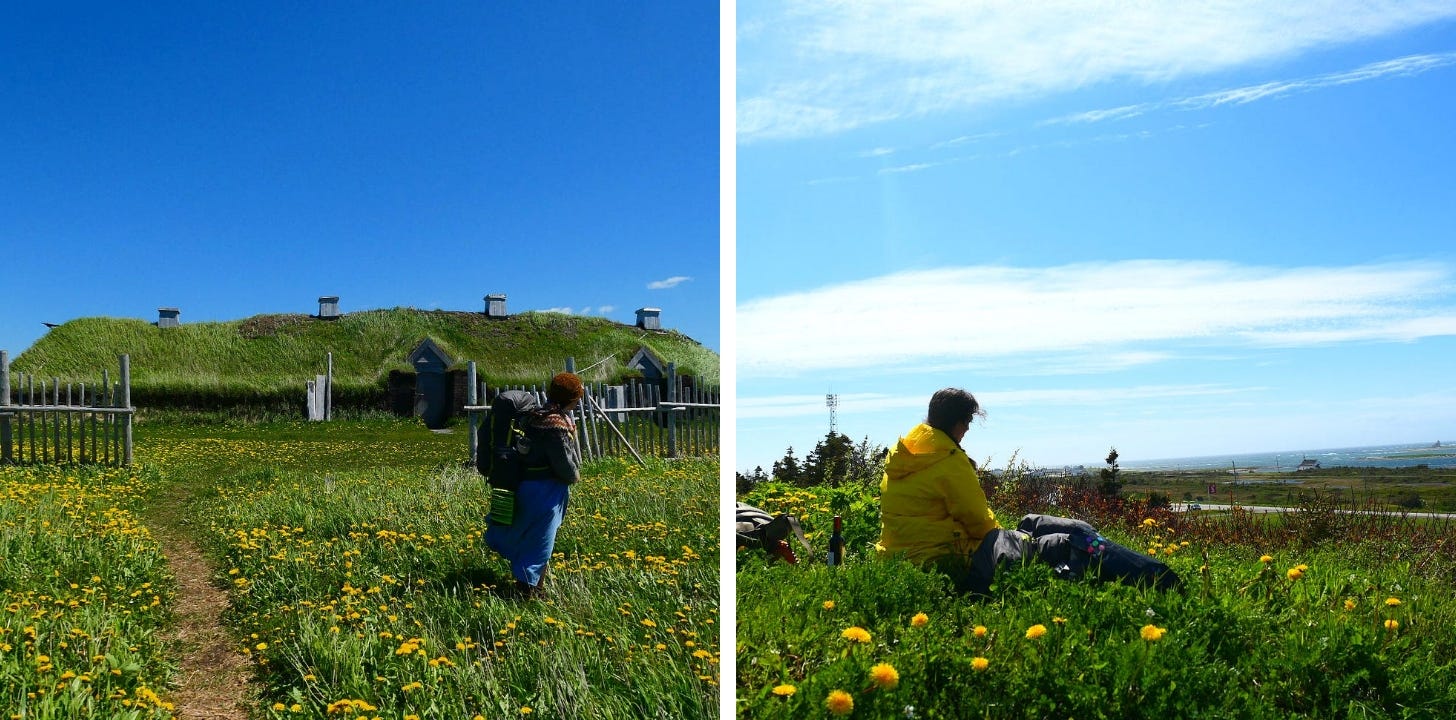 Much can be said about the Genesis of the New World — sugarcane and tropical gold, the arrogant harrumph of Spanish-blooded seigneurs and Nubian boys in chains, leaden crucifixes carried across malarial pampas. Or whitefish-scavenging Puritans, stiffening their collars in the heinous New England chill, their ships scrapped for firewood and shelter, covering bibles and dour women with covered hair who knew no dance or song. Zealotry and greed, forcible conquest and deception and rape, letters of marque and the blessing of Princes and clergymen — these are the stories of the New World’s bloody birth that so often circulate today, and they are always coded within a clear binary as triumph or tragedy. In either case, they are secondary — these stories are not firsts, not really, for the ‘discovery’ took place a long while before. He was a murderous chieftain in Iceland, sought out for his crimes and set before a tribunal of axemen; a man baptized in seals’ blood and fizzling mead, a man whose own survival required service to Gods so unthinkably cruel and remote that no man could suit their purpose, for fealty to them could only be paid in blood. Under the grip of their alien hands, a man could only be hardened to death, ignoring the ice forming on his eyelids in the vomitous onslaught of hail and wind as he sailed in a sprint toward death. Such a man could only be called Leif — such a man was fated to have been born by sleeping Norns who dwelled in the impenetrable upcountry of impassable fjords in Norge’s bleakest regions. Banished from home, banished again from Ísland, and again from Grænland. Hopeless, he raised a crew from the frozen, treeless land’s roughest and most-hated bastards, forcing them onto his forty-foot open-top barque and out to the west where no man had ever gone. Behind him — the corpses of respected men, their jewels upon his own neck, and their spirits skipping and somersaulting along the gunwhales of his doddering vessel to torture him and taunt him with death by drowning. They sailed to a worthless island so devoid of life they called it Helluland — land of flat rocks and stones. Southward they went, prowling along the ranges of the spinelike, unvegetated Arctic Cordillera, finding nothing. Finally — a miserable black spruce, first only one, then several, then in thickets which seemed to grow in wind-lashed coils along the gorse-furred shoreline. A few wretched, bitter berries; a few seals to eat. No human life to be seen at all — only dense, freezing fog and bitter nights afloat on hateful open sea. Where there was no wind or fog, there were mosquitoes and horse-flies that devoured a man like a thousand barbarous devils, and in the far corners of their peripherals, there were dark shadows of chieftains — hallucinations, or Gods, or unknown men. 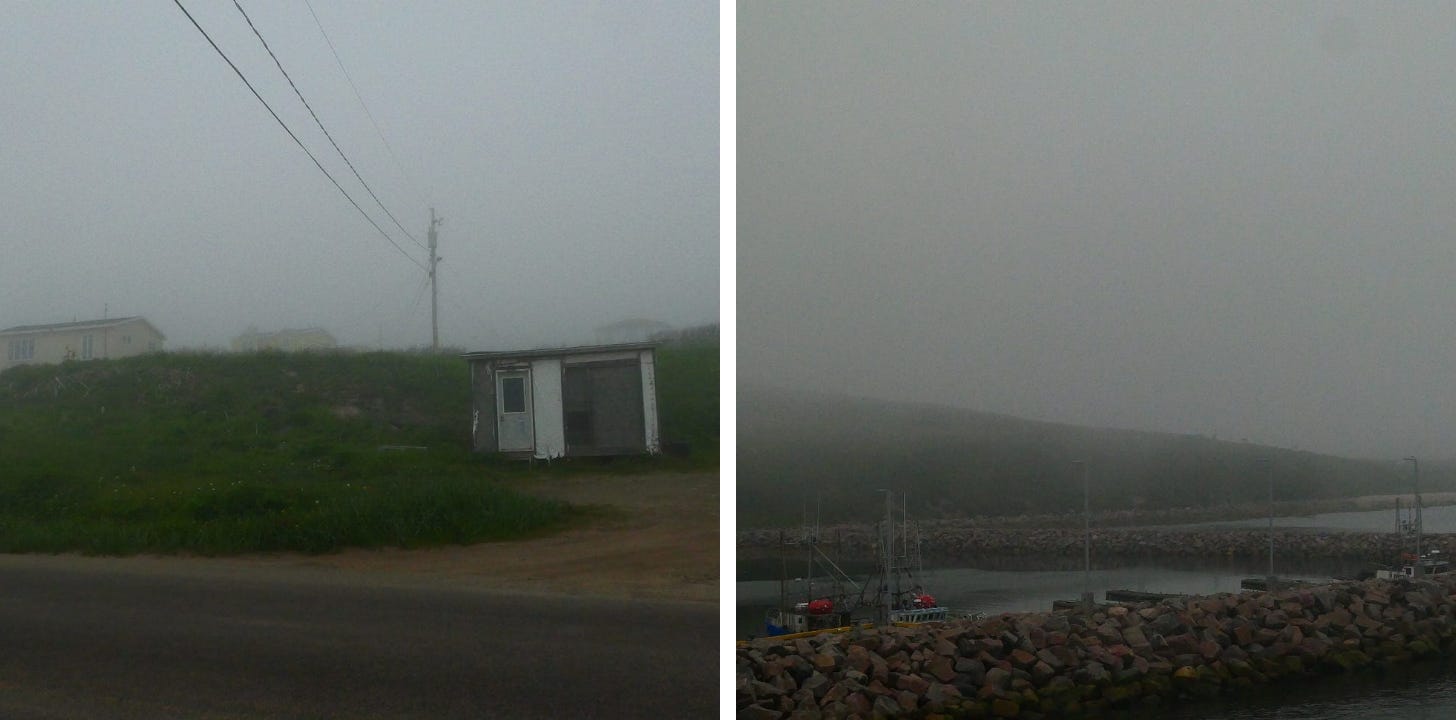 Soon, the coast was no longer visible again, and the currents of the straits caused the ship’s keel to tickle to the southwest. Fighting southeasterly, land came into sight within two days — and exhausted, they landed, wondering if perhaps they’d reached the toe of a land of Gods and giants, nervous that their disturbance would vault them out of Midgard and into some unknown hell far from the villages of their birth. They disembarked, digging mounds of earth into Scandinavian homes roughly the size of the doublewide trailers that would be scattered by giant, rubber-wheeled, smoking carts nearly a thousand years later. By then, those taking up residence along these bizarre shores would be speaking Ænglisc — the language of Leif’s own ancient enemies, whom he had plundered to viscera and ruin elsewhere. Whatever wyrds would fate this were not known then to Leif and his men — all they knew now was that there was a stream of fresh water, constant gales to keep the bugs and fog away, and bog iron in the peaty orange-red soil below them. And further off — Skrælings. Those little elvish humans who would appear and re-appear as sporadically as weird Gods in a deathly and feverish dream; standing in the thousand-winged flights of pale fog at one moment, faces red with the blood of elk and whale — and disappearing the next. No zealotry here, no plunder, no slavery and rape — no kingdom or empire or royal gems. Only exile to a world of harrowing mystery; only the solace of a bitter and hungry getaway under the blessings of drunk and cryptic Gods. Only the furtive, tentative tenancy of men who would only a decade later burn their houses to the ground before departing — leaving next-to-nothing behind. 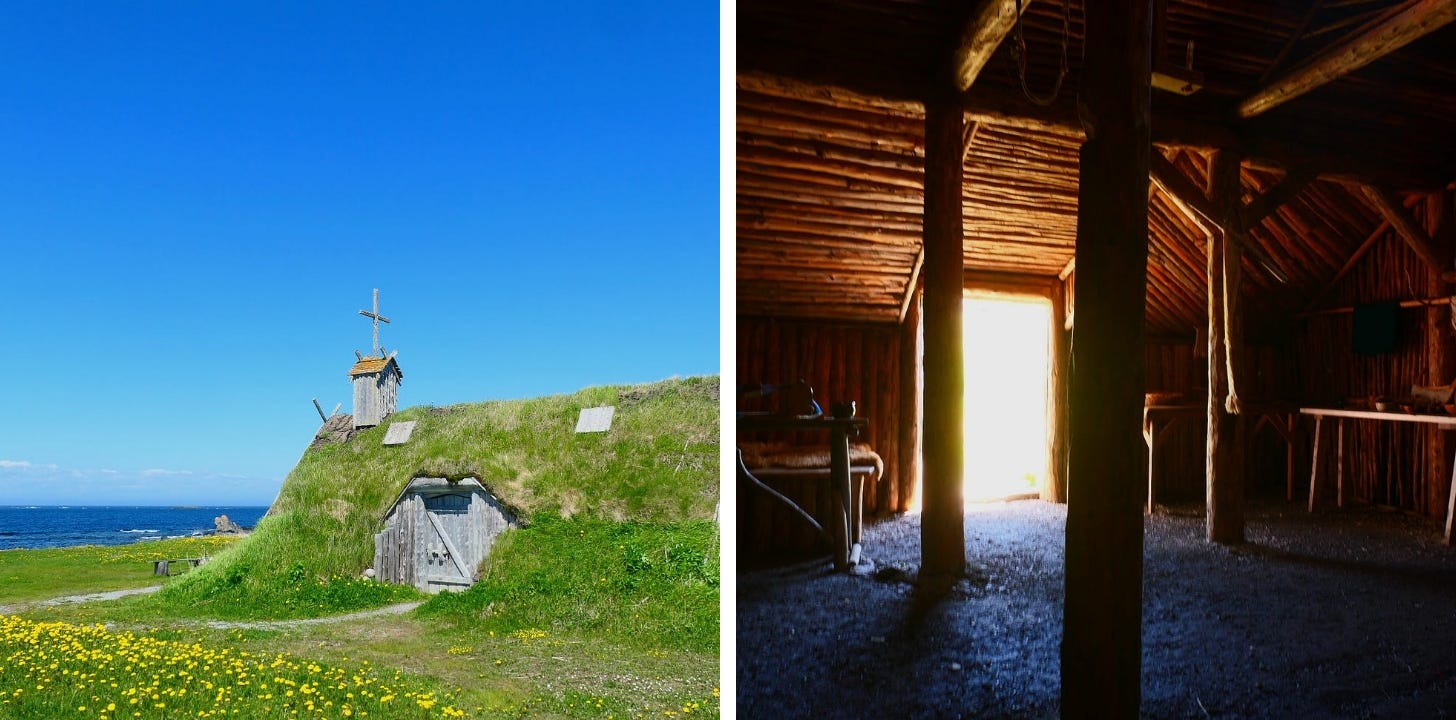 This saga of beginning brings to light a seldom-discussed facet of the European man in his most aboriginal era; in contrast to the other, more frequently mentioned geneses of the New World, the austere, mysterious, mystical voyages of Leif Ericksson present the European man not as a bloodthirsty lordling of greed and plunder but as a Pagan penitent, purifying himself by wandering across uncharted desolation. No plantations did he build, no Cathedrals or great obelisks, no art did he leave. Only a few cloak-pins and beads, a few ruins and stone knives — and a bizarre, harrowing saga, an examination of which will make the hair on any reader’s nape stand on end with mystery and apprehension. For in one regard the European man is a remorseless conqueror and builder of mercantile dominance; he is indeed one who wrests gold and wheat from calloused and chained hands, the one who unsheaths his sword at the mention of old Gods or at muttering in old tongues. But there is another, earlier side to this spirit — a gentler, vagabond spirit of the humbled convict and the defeated warlord. Like a Ronin or a desperado, these Vikings came not as takers or as builders; they came under duress, their flight was the flight of the hated and rejected, the tearful departure of the damned — they came to the end of the world fearfully and fled from it as quickly as they came. Inasmuch as the birth of the New World is viewed metaphysically rather than in strict economic, cultural, or religious terms — Leif Ericksson struck the first chord in a thousand-year saga of New World desperadoes, rejects, and outlaws forging into uninhabitable wastes and blearying frontiers. The road of tycoons, conquistadors, and slave-drivers was paved by exiles and desperadoes — many of whom traveled through a purgatory of Old Gods on the path to edification and peace. This is the metaphysical score that preceded all else in the European journey into this continent. So the beginning went, quietly etching a mark of pre-Christian aboriginal Europe in the cairns of elusive Innu and Beothuk, notching the names of wiry, unkillable soldiers-of-fortune into the bleak stone of a wind-tossed and faraway realm. And the land would go silent in the coming years, remaining only sporadically fingered by the hands of men, falling under the rule of French, then British, then French, then Newfoundlander, then Canadian — though most generally, these changes in rule were only matters described by faraway cartographers. In actual fact and regardless of the claims of distant empires, the land would evade serious human presence for nearly eight-hundred years — and the mounds of the Vikings would lay un-disturbed; earthen markings of Europe’s ancient fugitives and seafaring vagabonds. Ancient stanzas in soil foretelling fate and European man’s original nature — nature which would later be spun into bloody webs by commerce and schism and harried transatlantic voyages. But the mounds would remain to testify to another side of the strange, pale, blue-eyed newcomer race. That the land that hosted the beginning should be, in actual geographical fact, the end of the land in a literal sense is an almost Oriental notion — a paradox that would make Lao-Tzu smile. And moreover, that one-thousand-years later, this place of beginnings should come to its strange and bitter end is all the richer a meal for the mystic. 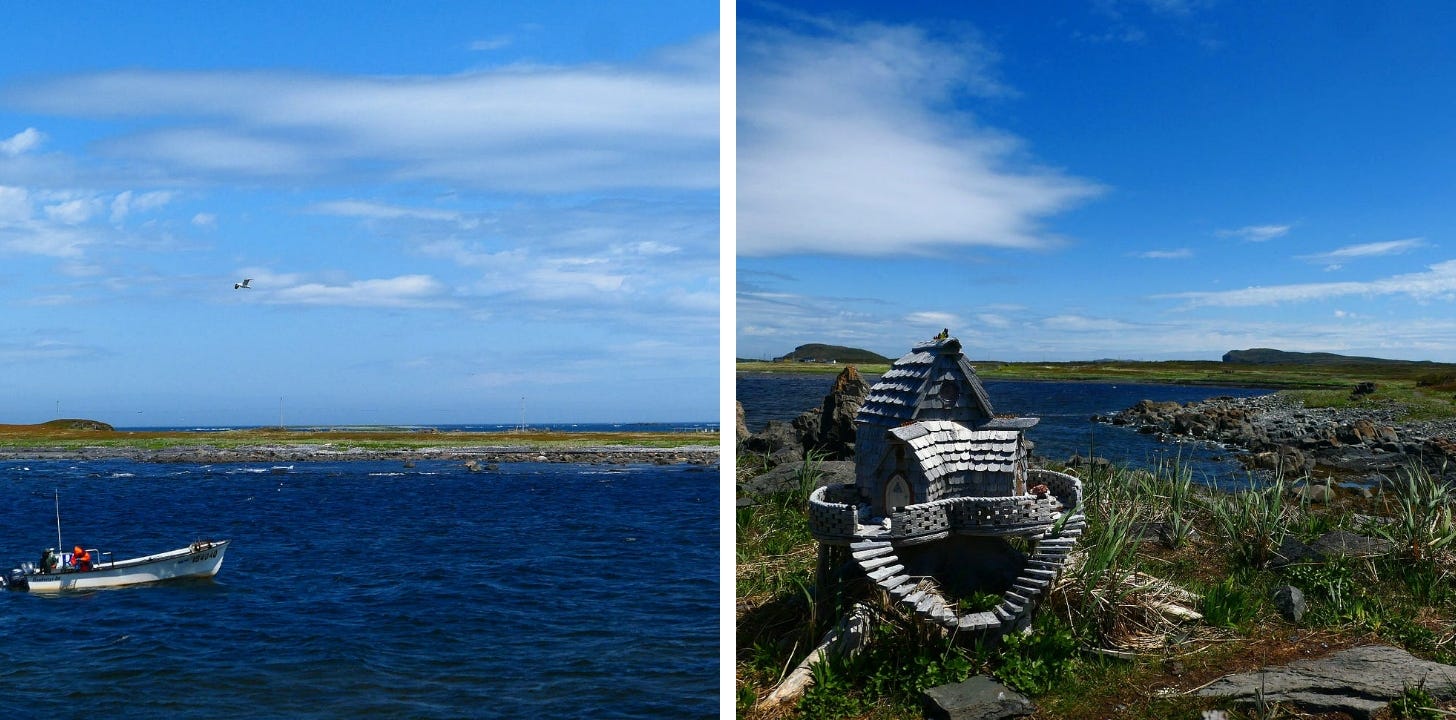 Fishermen at work in the bay at L'Anse Aux Meadows.
It was through this strange end that my wife and I hitchhiked, beginning at Port-Aux-Basques Newfoundland with thumbs raised on empty highways of balsam and bakeapple. Doyles, Corner Brook, Rocky Harbour — all of these bore at least a few of the signs of civilized life that one looks for on arrival on some new shore. Electrical lights, cars on the road, Tim Horton’s, happy hikers with cameras — all of these we saw in spades, and in their presence we lived comfortably. We only departed from the realm of simple tourism when we forged northward from Gros Morne National Park, out and up along Newfoundland’s ‘North Arm’ — where there are no towns of any size, only rock-perched villages on an emptying coastline and rusting hulls of cod-fishing boats and the peeling paint of harbor sheds. It was at ‘the Arches’ that the young ladies from Edmonton, Alberta dropped us off. A tour bus of Ontarian geriatrics passed through, leaving us alone along the desolate highway, where only a few cars passed each hour. The sun was setting, no town was near enough to walk to, and we were alone. When you are hitchhiking, you get used to this tableau — an emptying road, a setting sun, the anticipatory excitement of finally seeing a car headed your way. But then, as the car approaches, you see that they are elderly tourists; they avert their eyes as if they might ‘catch’ whatever disease of the mind left you in this hopeless position. They accelerate and drive out of sight, the sound from their engine fading until you again hear only the sounds of the ocean’s indifferent waves. But finally, after hours there — a red-faced man stopped in the middle of the road, rolling his window down. Whatever he said was incomprehensible. It is, in normal circumstances, my policy to always ask a prospective ride the simple question: “Where are you headed?” In the time it takes for him to answer, I can survey him, his car, discern his sobriety and trustworthiness — and then make a decision about whether I want to accept his ride. To my question, however, he only answered “Ayeb ‘gun a donni-sheba, um,” to which I said “what?”. “Donni-sheba, ayeb, ‘das ‘me gunta, aye!” And, surveying the desolation of our environs and the setting sun, I motioned to Keturah to slough her bag into the backseat — and we took off, and my nerves were up. 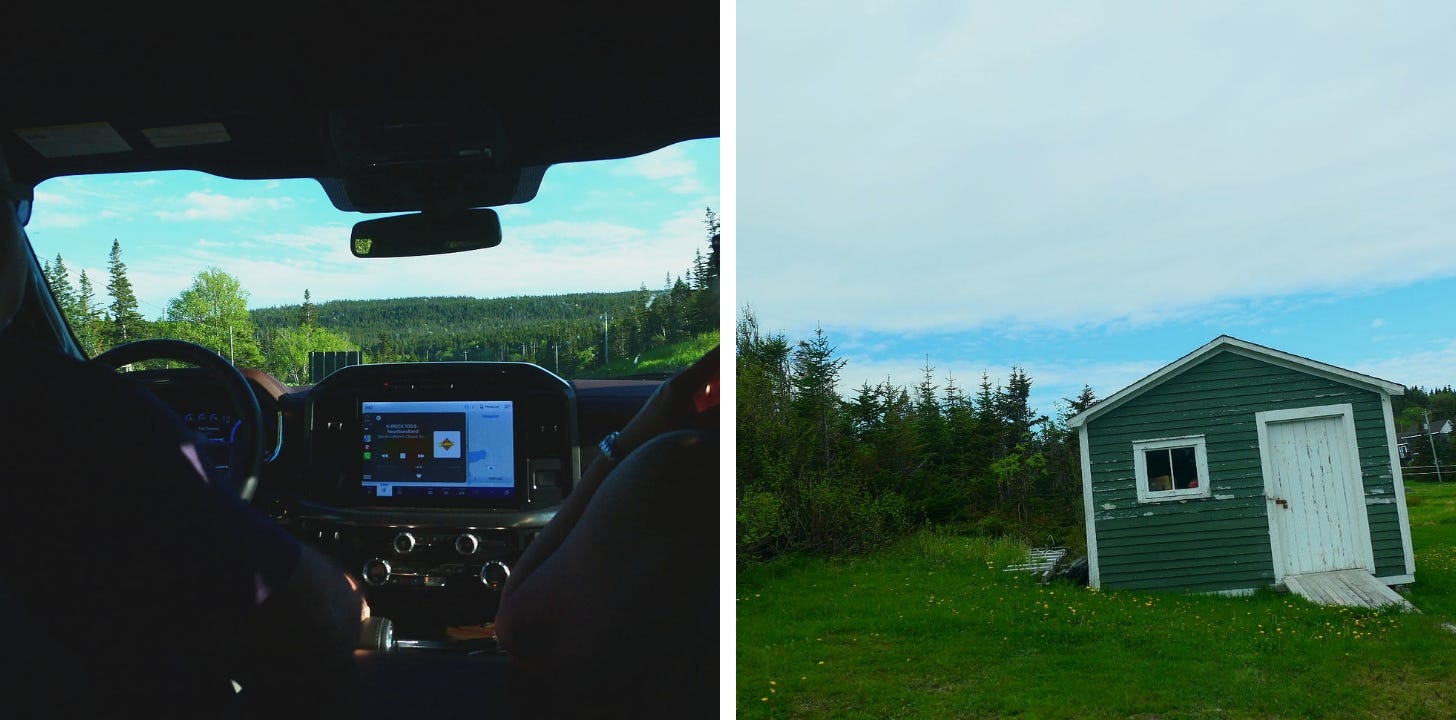 The man was drinking high-gravity beer, and he was certainly deep in his cups — stiff-lipped and drunk. “Donni-sheba,” I learned, was how a seriously drunk Newfoundlander might say the name of the nearby town, Daniel’s Harbour, and indeed, that was where the man was headed. Blessedly, he was the sort of drunk driver who preferred to go absurdly slow as he went — we tottered down the highway at a serene 70kmh (the speed limit was 100kmh). As we went, it became a bit easier to understand his drunken patois. “I’s a cun-trata d’un Brampton ‘by, dun ‘but terteh yarz” he said, which meant he was a contractor in Brampton, Ontario for a period of thirty years. Later, when mentioning his time in Brampton, he seemed to indicate that he’d only been there for sixteen years. These are situations where the function of speech appears to have less to do with the straightforward relay of information and more to do with the relation of the rough mythological thrust of a man’s message. He went on to tell of his father’s work in the local zinc mines, emphasizing that in his youth in Daniel’s Harbour a man was either a fisherman or a miner. But since then, the fishery collapsed and the mine has been shut down. His town — formerly of about 6,000 souls in his own recounting of the matter — is now home to about 600 people, most of them elderly. “Thur’z a pub ‘dow ‘by, a ‘by I kno’s ‘a be glah’d a mee-cha, eh,” he said next, and from his slurred speech, I heard only the word “pub” and got the sense he intended to take us there and buy us a beer. I couldn’t refuse. We slowly rolled into the gravel parking lot where, though it was a Saturday night, only one car was parked, and we offloaded our bags onto the pub floor and proceeded to order. I got what he was having — a disgusting, cheap glass bottle of swill called “Blue Star” which I’ve only ever seen in Newfoundland. Though I’ve been a drinker of cheap beers all my life, I had to hide my wince as I took a slug of the foul concoction. As I drank, I asked him and the chunky barkeep — who had what seemed to be a perfect Irish accent, though he was a lifelong Newfoundlander — a question: “What do you think the future of Daniel’s Harbour is?” Both blustered as horses do when ruffled, laughing with their mouths but with their eyes bearing a sad look. 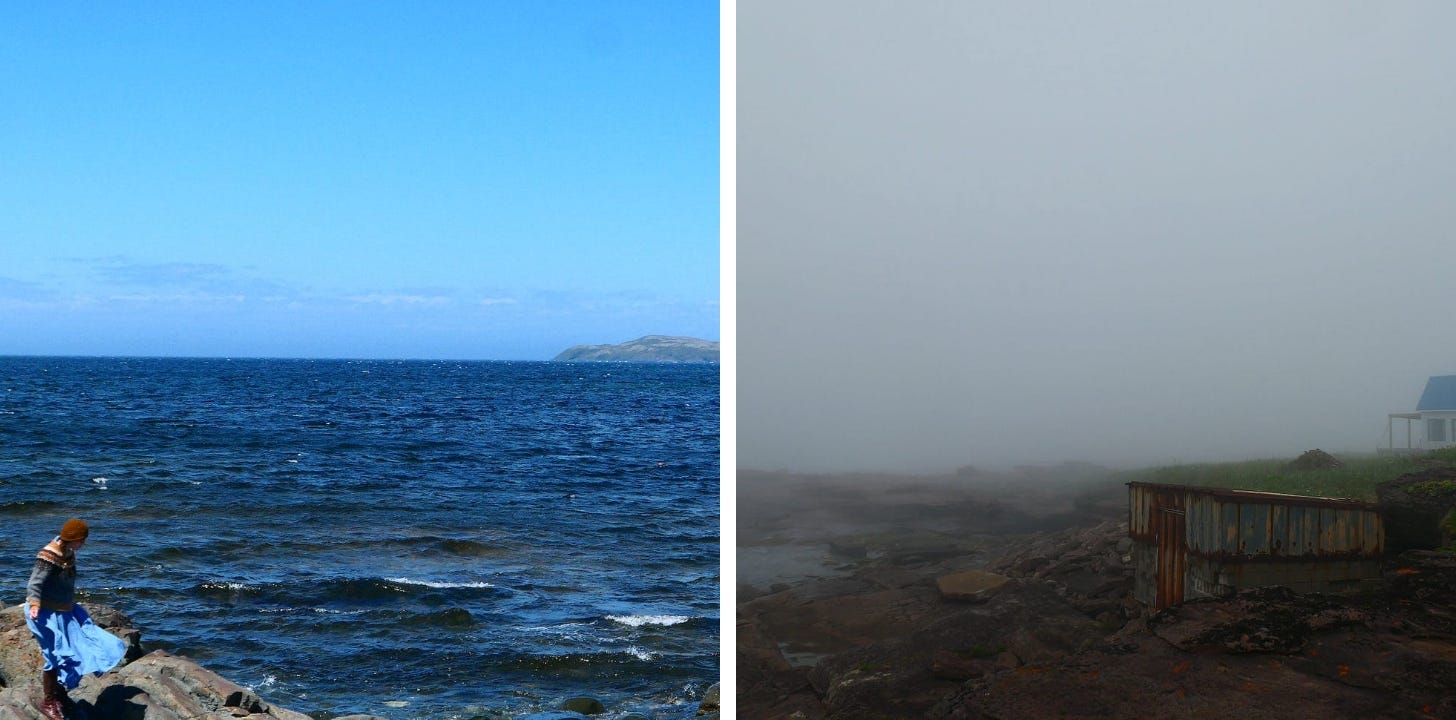 Our ride answered: “Eh, dey’s eye-uh ‘ha tha park buys us oot, ah’d ‘jes naught’n.” And the barkeep echoed him in clearer English — “Aye, by how I sees it ‘e’s right in’t it? The park’ll buy this land I say, or if naught so, ‘en it’ll be left ‘fer the seabirds ‘n all — ‘jus empty.” And I shot back — “how could such a beautiful place just be left for the seabirds? Who wouldn’t want to live here? In the rest of Canada there are plenty of immigrants — not even them you think?” The barkeep smiled at my mention of immigrants. “Why, we had a fair few lads come by ‘hur some ‘yars back, y’see, ‘bys frim Injia, and them ‘bys they found it quite lonesome — and off they went away. ‘Laird knows ‘jes where they gone. And as ‘fer young ones, well, my son, we’ve got now only six.” Our ride — now drunker still than before — echoed the barkeep, nodding: “Six, e’srite ‘by. Six.” The barkeep struck the final note: “Aye, ‘enn ‘eyll all wind up goin’ to Alberta, where there’s money ‘ta be made. No jobs ‘ere in Daniel’s, ‘by, none at-tall. It’s jest about over now, my son.” Two days later we strolled down the wooden walkway at L’Anse Aux Meadows, where the wind was galloping across the dandelions which were growing atop the Viking mounds. In our field of vision, a one-thousand-year circle spun — there were the mounds, the ruins, the reconstructed Viking sodhouses standing there by the sea; and bobbing upon that very sea there were Newfoundland lobstermen actively working, hauling up lobster pots in their rubber coats, dragging in catches for the market. A millenia-long whorl in time ripens before the eyes; we watched the discovery and its long-matured fruit in the final stages of its life all at the same time. Approaching the sea, there is a strange and beautiful statue in copper. Two figures dance without touching; a whale and a spear, Scandinavia and Newfoundland, an Innu and a Viking. One half was made by an Innu Newfoundlander — the other was made by a Swede. The circular motif is everywhere here; but its spinning is in no way destabilizing, for the land is an ancient and immovable sentry who presides calmly over the whole scene just as it has since the beginning. 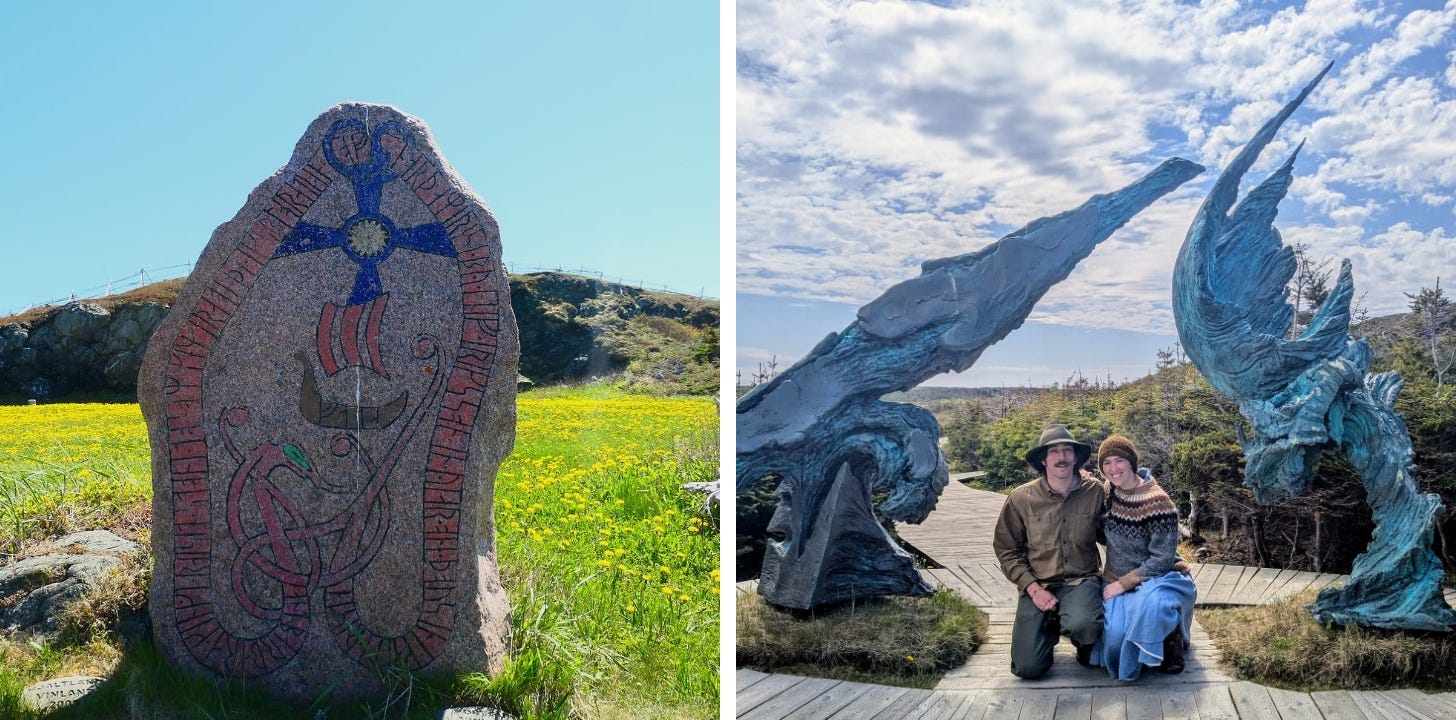 As I gazed upon the statue a tear welled up in my eye. I thought of Daniel’s Harbour and its six children; I thought of Newfoundland’s precipitously declining fertility rate and its staggering rate of outmigration — I thought of lands from which even immigrants from far-flung nations fled upon arrival. Cod fishery collapse and mine closures, end-of-life-care facilities, caved-in fish pounds and collapsing wharves, dusty books on a shelf on the lives of long-gone men — all on the back of Leif Ericksson and his crew of blue-eyed misfits. On the road to the beginning, we found the end. What wilderness would flourish here a century from now cannot be known; what few men might again congregate here on these inhospitable shores can only be imagined. Outlaws or government researchers, soldiers or poets, fishermen or vegan tourists — we cannot know. As we boarded the ferry at Saint Barbe, bound for Blanc-Sablon Quebec and Labrador across the desolate Strait of Belle Isle, I wondered if the strange lands around L’Anse Aux Meadows could be a canary in the coalmine — if perhaps what has taken place there is a tragically beautiful harbinger of things to come elsewhere in the New World. A collapse in birthrates; an emptying of the mythologically-charged countryside where nations raised their flags and the gilded architecture of men’s hearts was forged. In it, a completion of the cyclical music of New World history; a swooning gasp and a subsequent scattering of human ashes to the winds and seas and all their spirits. Perhaps Old Gods will wrangle across land gone feral; perhaps exiles will wander again across desolate wastes. At its end, there will be the rugged cairns of stone — the Innu ghost, the caribou, the crumbling arch of seastone. But always, there will be a Leif Ericksson furtively landing, marrying blood to stone cleaved clear across by swirling oceans, convinced that he is trampling through a fog-shrouded mystery of weird, drunken, wandering Gods. And at the end — perhaps “it’ll be left ‘fer the seabirds ‘n all — ‘jus empty.” Let’s hope not. You're currently a free subscriber to Hickman's Hinterlands. For the full experience, upgrade your subscription. |